Southern Utah is a paradise for adventurers, offering a stunning mix of red rock landscapes, world-famous national parks, and hidden oases. Among these, Zion National Park stands out as a bucket-list destination, renowned for its towering sandstone cliffs, narrow slot canyons, and breathtaking vistas. Whether you’re hiking through The Narrows, conquering Angels Landing, or exploring quieter corners of the park, preparation is key to ensuring your trip is smooth, safe, and memorable.
Drawing from expert insights and years of national park experience, this guide shares twelve must-know tips for visiting Zion National Park. These tips will help visitors maximize their time, avoid common pitfalls, and discover both iconic and lesser-known attractions. For those staying near Zion, choosing the right vacation rental can also enhance your adventure, making every moment comfortable and convenient. Discover how to make the most of your Zion experience, from practical advice on permits and shuttle schedules to hidden gems that few visitors explore.
1. Check Water Levels and Flash Flood Warnings Before Hiking The Narrows
The Narrows hike is one of Zion’s most famous experiences, renowned for the surreal beauty of wading through the Virgin River as it carves its way through a narrow slot canyon. However, this hike is highly dependent on river conditions and weather, making safety precautions essential.
The National Park Service closely monitors water flow rates and flash flood risks. Typically, if the river’s flow rate exceeds 150 cubic feet per second (CFS), the Narrows hike is closed to visitors to protect their safety. This situation often arises in spring due to snowmelt or heavy rains, sometimes causing closures for several days in April and May or longer during prolonged wet periods.
Before you rent gear or head to the shuttle for the Narrows, always check the current water conditions on the National Park Service website or at the Zion Visitor Center. This step not only ensures your safety but also prevents disappointment from arriving to find the trail closed.
2. Be Aware of Toxic Cyanobacteria in the Virgin River
While hiking The Narrows, it’s important to know that the Virgin River sometimes contains toxic cyanobacteria. These bacteria can pose health risks, especially if ingested or if they enter open wounds.
Visitors should never drink river water and always carry sufficient drinking water for their hike. Avoid dunking your head underwater or splashing water into your mouth. Using a walking stick is highly recommended to maintain balance and reduce the risk of falling into the river.
If you have any cuts or sores, cover them with waterproof bandages to prevent infection. Should you experience any unexplained symptoms after exposure, seek immediate medical attention and contact the Utah Poison Control Center at 1-800-222-1222.
Ultimately, deciding whether to enter the water is a personal choice, but being informed and cautious will help you enjoy the hike safely.
3. Secure a Permit for Angels Landing’s Final Section
Angels Landing is another iconic Zion hike, famous for its breathtaking views and thrilling narrow ridges with steep drop-offs. To manage visitor numbers and ensure safety, the National Park Service requires a permit for the final half-mile section where chains assist hikers along the exposed path.
Permits are distributed via a lottery system four times a year, with an additional secondary lottery held the day before. While securing a permit can be competitive, it’s still possible to obtain one even close to your visit date. If you don’t get a permit, don’t worry—the hike up to Scout’s Lookout, which offers stunning scenery and a rewarding experience, does not require a permit and is well worth the effort.
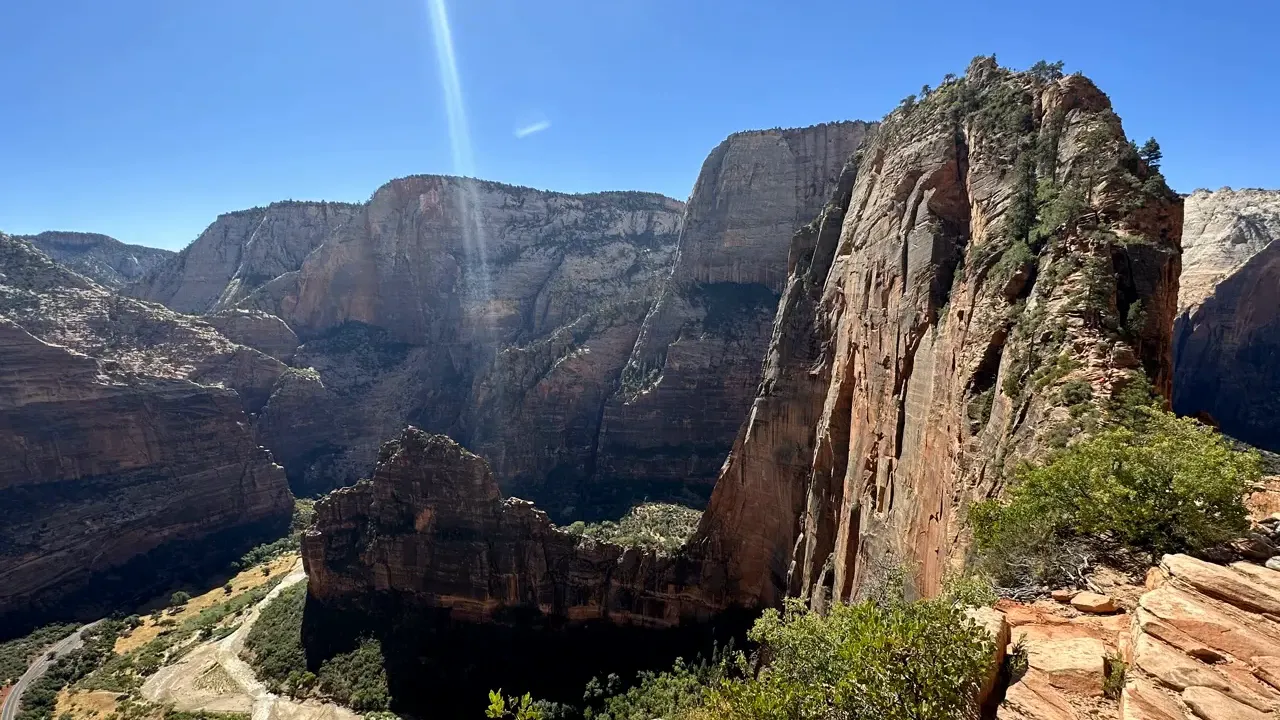
4. Book Accommodations Early to Avoid Disappointment
Zion National Park attracts millions of visitors annually, and lodging options fill quickly, especially during peak seasons like summer and spring. Whether you prefer staying inside the park or in nearby towns, advance booking is essential.
The gateway town of Springdale is the most popular base for visitors. It offers a range of hotels, campgrounds, and vacation rentals, many of which connect conveniently to the park’s shuttle system. If accommodations inside the park are unavailable, Springdale’s proximity and shuttle access make it an excellent alternative.
For those looking for luxury or family-friendly rentals close to Zion, exploring options at Stay Copper Rock can provide a comfortable home base with amenities that enhance your visit.
5. Know the Zion Shuttle Schedule to Navigate the Park Efficiently
Most of the year, private vehicles are restricted from Zion Canyon’s main road to reduce traffic and preserve the environment. Visitors must rely on the free shuttle system, which runs frequently from early morning until late evening, especially during the busy summer months.
Shuttles begin as early as 6 AM in summer and continue past nightfall. Knowing the shuttle schedule helps you plan your day effectively, especially if you want to catch the first or last shuttle to maximize your time on the trails.
Missing the last shuttle can mean a long walk back, so always check updated schedules on the National Park Service website or at the visitor center. For more on shuttle tips and schedules, see our detailed guide on Zion Canyon Shuttles.
6. Check Trail Conditions and Closures Before You Go
Zion’s landscape is dynamic and sometimes unpredictable. Weather events, rockfalls, and natural processes can lead to temporary or prolonged trail closures. Several popular trails may be inaccessible due to safety concerns, and some bridges crossing the Virgin River might be out of service.
Before heading out, it’s wise to check current trail conditions on the official National Park Service website or at the visitor center. Having a backup plan and being flexible will ensure your day remains enjoyable even if your first choice trail is closed.
7. Relax Under the Enormous Cottonwood Tree at Zion Lodge
After a day of hiking and exploring, one of the best spots for relaxation is the large lawn area in front of Zion Lodge. Dominating the space is a massive cottonwood tree that creates a serene environment perfect for picnics or simply unwinding.
During the cottonwood’s blooming season, the tree is covered in fluffy cotton, creating a unique atmosphere that can be a bit messy but undeniably beautiful. The lodge nearby offers refreshments like ice cream and lunch, making it easy to refresh yourself while enjoying the peaceful surroundings.
8. Explore Beyond Zion Canyon: East Mesa, Kolob Canyons, and More
While Zion Canyon is the park’s most visited area, other regions offer equally stunning landscapes and fewer crowds. Visitors should consider venturing to:
- East Mesa: Located atop the East Rim, this area offers spectacular views and access to the Checkerboard Mesa, a striking rock formation. The hike to Observation Point from here provides a fresh perspective on the canyon below.
- Kolob Canyons: Situated in the park’s northwest corner, Kolob Canyons feature crimson cliffs and peaceful trails far from the main canyon’s bustle. This area’s quiet beauty rewards those willing to make the longer drive.
- Kolob Terrace Road: A scenic byway that traverses diverse landscapes from woodland highlands to desert scrub and farmland. The drive culminates at Lava Point Lookout, offering panoramic views and solitude.
Exploring these areas can provide a deeper appreciation of Zion’s varied geology and ecosystems.
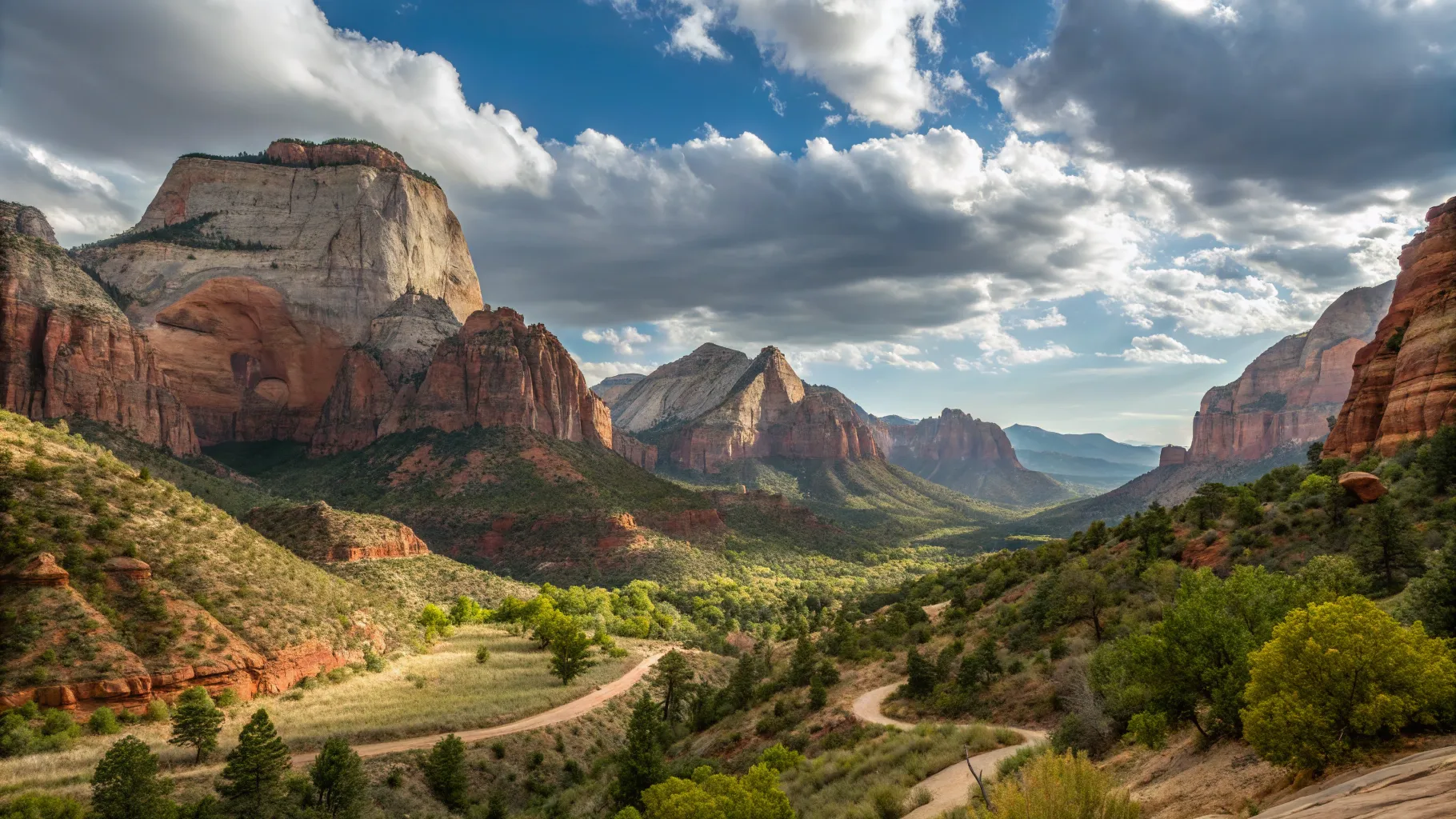
9. Consider an America the Beautiful Pass for Multiple Park Visits
If Zion is just one stop on a multi-park itinerary in the Southwest or beyond, purchasing an America the Beautiful annual pass can be a cost-effective choice. This pass grants access to over 2,000 federal recreation sites, including all national parks, forests, and monuments.
The pass covers entrance fees for up to four people in a single vehicle, making it an excellent investment for families or groups planning several visits within a year.
10. Participate in Ranger-Led Programs to Enhance Your Experience
Zion National Park offers a variety of ranger-led programs that provide fascinating insights into the park’s geology, wildlife, history, and cultural significance. These programs include guided walks, talks, and evening presentations, enriching your understanding of the park beyond what you might discover on your own.
Check the current schedule at the visitor center or online to see available programs during your visit. Timing your activities around these offerings can add a meaningful dimension to your trip.
11. Use Detailed Itineraries to Maximize Your Time
Planning a trip to Zion can feel overwhelming due to the abundance of things to see and do, the park’s popularity, and the need to time activities precisely to avoid crowds or closures. Detailed itineraries tailored to different activity levels and interests can take the guesswork out of your trip.
These itineraries provide hour-by-hour guidance, including hiking descriptions, shuttle information, driving directions, maps, and alternative options for various fitness levels. Whether you prefer a leisurely visit or an active adventure, having a structured plan helps you cover highlights without stress.
For those interested in expertly crafted Zion itineraries, explore options designed to fit one, two, or three-day visits that balance adventure and relaxation.
12. Start Early to Beat the Heat, Crowds, and Parking Challenges
Arguably the most impactful tip for Zion visitors is to begin your day early. Arriving at dawn or shortly after offers multiple advantages:
- Cooler Temperatures: Summer in Zion can see temperatures soar above 100°F, making early mornings the most pleasant time for hiking and exploring.
- Fewer Crowds: Trails and shuttle stops are less crowded early in the day, allowing for a more peaceful experience.
- Better Parking: Parking lots, especially the main lot at the visitor center, fill rapidly, often by 8 AM or earlier during peak season. Arriving around 7 to 7:30 AM strikes a balance between avoiding the very first rush and beating the later crowd.
If you miss the early window, arriving around 3:30 PM can also be a good strategy as crowds begin to thin out. Alternatively, parking in Springdale and using the free town shuttle connected to the park shuttle is a convenient option when lots are full.
Planning your days with early starts can transform your Zion experience, making it more enjoyable and less stressful.
Additional Tips for Visitors Staying Near Zion
For travelers staying in vacation rentals near Zion, such as those offered by Stay Copper Rock, these tips can help create a seamless adventure:
- Choose rentals with easy access to shuttle stops or park entrances to minimize commute times.
- Look for properties with full kitchens and outdoor patios to enjoy meals and relax after active days.
- Consider family-friendly homes if traveling with kids, offering space and amenities for everyone.
- Use rental concierge services to get personalized recommendations for dining, tours, and activities.
Combining comfortable accommodations with smart planning sets the stage for a truly memorable Zion getaway.
Frequently Asked Questions About Visiting Zion National Park
Q: When is the best time to visit Zion National Park?
A: Spring and fall offer mild weather and fewer crowds, but summer is the most popular season despite the heat. Early mornings in summer are best to avoid high temperatures and busy trails.
Q: Do I need a permit to hike Angels Landing?
A: Yes, a permit is required for the final half-mile section of Angels Landing. Permits are distributed via a lottery system, but you can hike up to Scout’s Lookout without one.
Q: Can I hike The Narrows year-round?
A: The Narrows hike is only accessible when water levels are safe. It is often closed in spring due to snowmelt and flash flood risks. Always check current conditions before planning your hike.
Q: How do I get around Zion Canyon if private vehicles are restricted?
A: The park operates a free shuttle system for most of the year, which is the primary way to access Zion Canyon. Knowing the shuttle schedule is essential for efficient travel within the park.
Q: What other areas in Zion National Park are worth exploring?
A: East Mesa, Kolob Canyons, and the Kolob Terrace Road offer stunning scenery and fewer visitors, providing a quieter, diverse experience beyond Zion Canyon.
Conclusion
Visiting Zion National Park is a breathtaking experience filled with world-class hiking, stunning natural beauty, and opportunities for adventure and relaxation. By following these twelve essential tips, visitors can navigate the park safely, avoid common challenges, and unlock hidden gems that make Zion truly special.
From checking river conditions before The Narrows to securing permits for Angels Landing, from planning early starts to exploring quieter park regions, preparation is the key to a memorable trip. And for those staying nearby, choosing the right vacation rental can elevate your entire visit, providing comfort and easy access to all that Southern Utah’s red rock country has to offer.
For more ideas on where to stay and what to do near Zion National Park, explore the [Zion National Park vacation rentals](https://staycopperrock.com/activities/zion-national-park/) and discover other hidden hikes in Southern Utah with our top must-do activities guide. Planning your trip with these resources ensures you capture the best of Zion’s magic while enjoying a comfortable home base in the heart of Southern Utah.

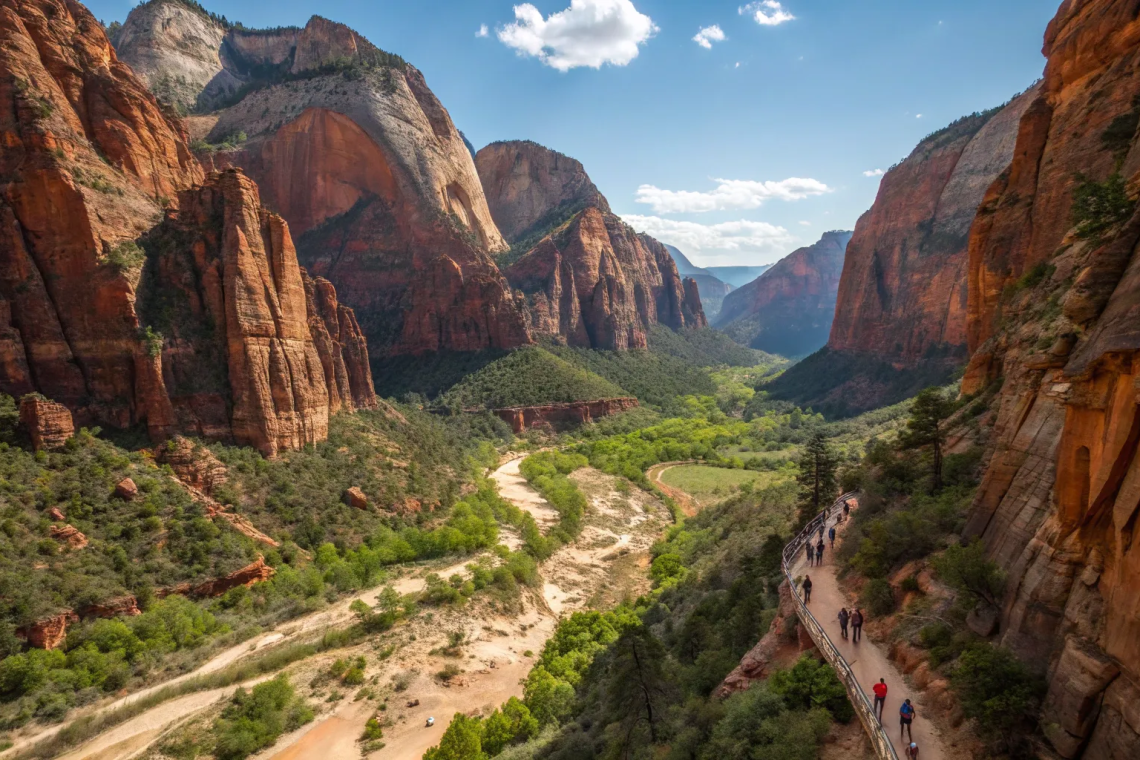


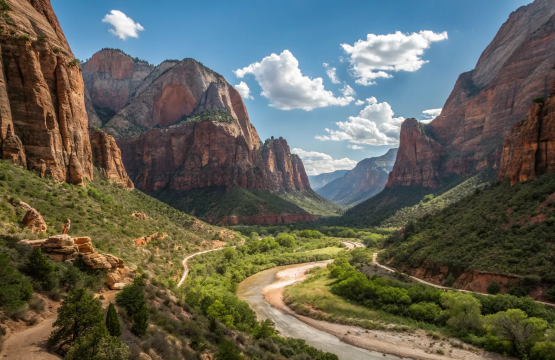
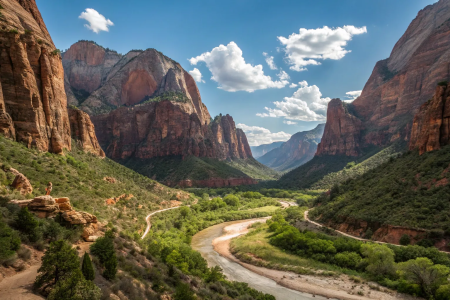
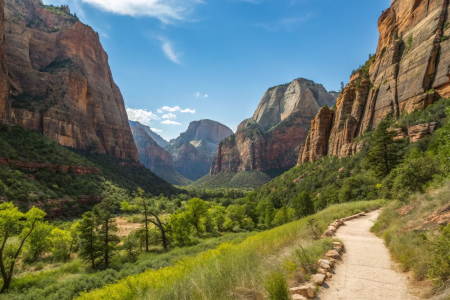

Join The Discussion